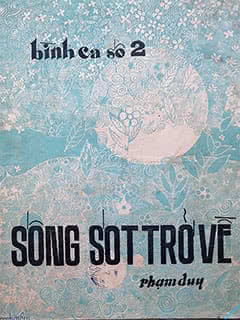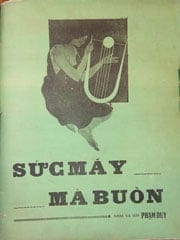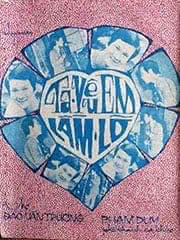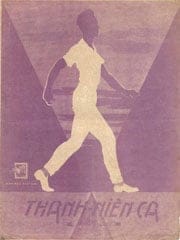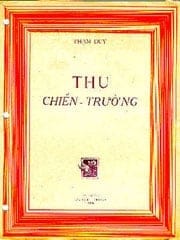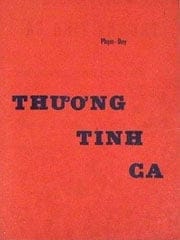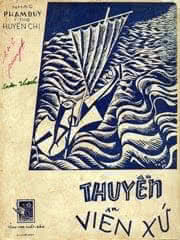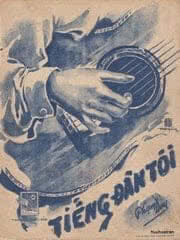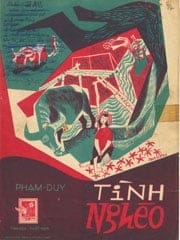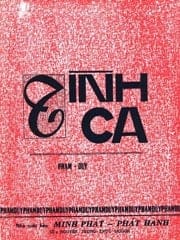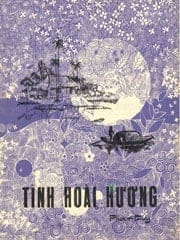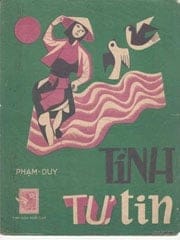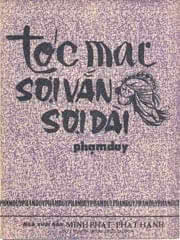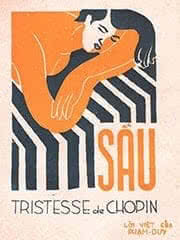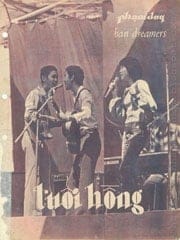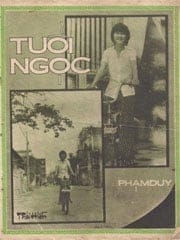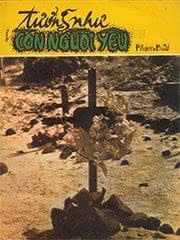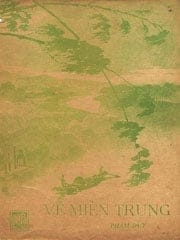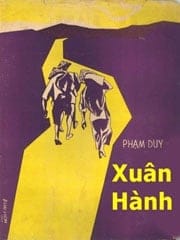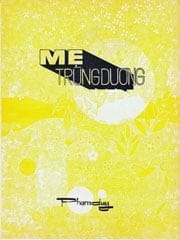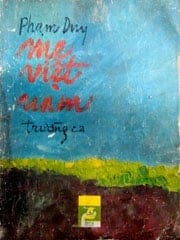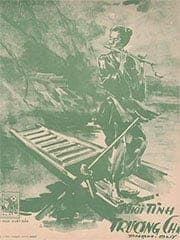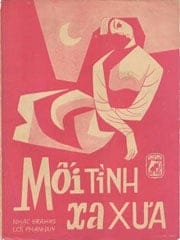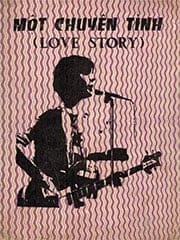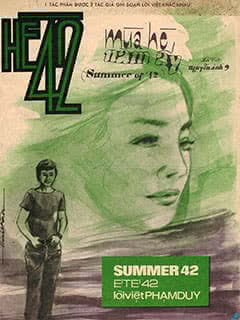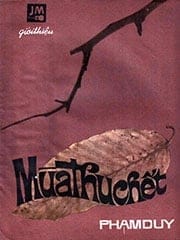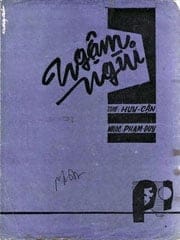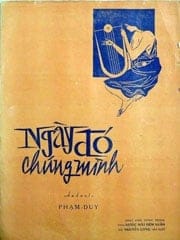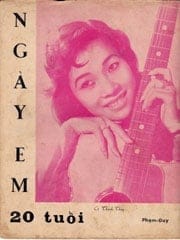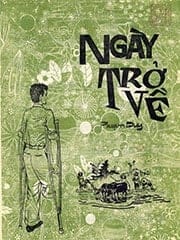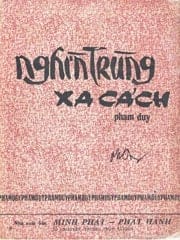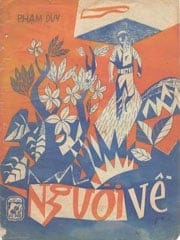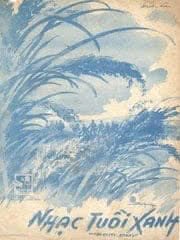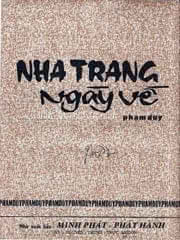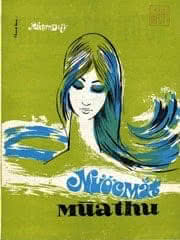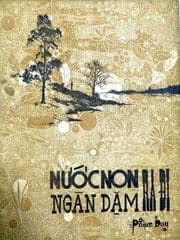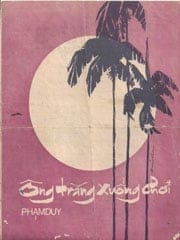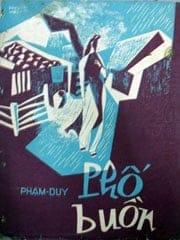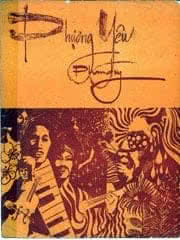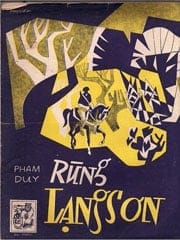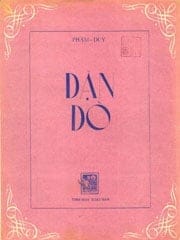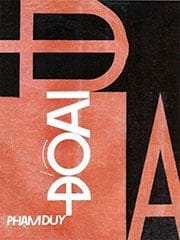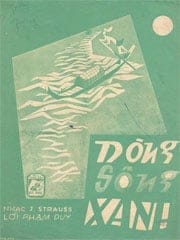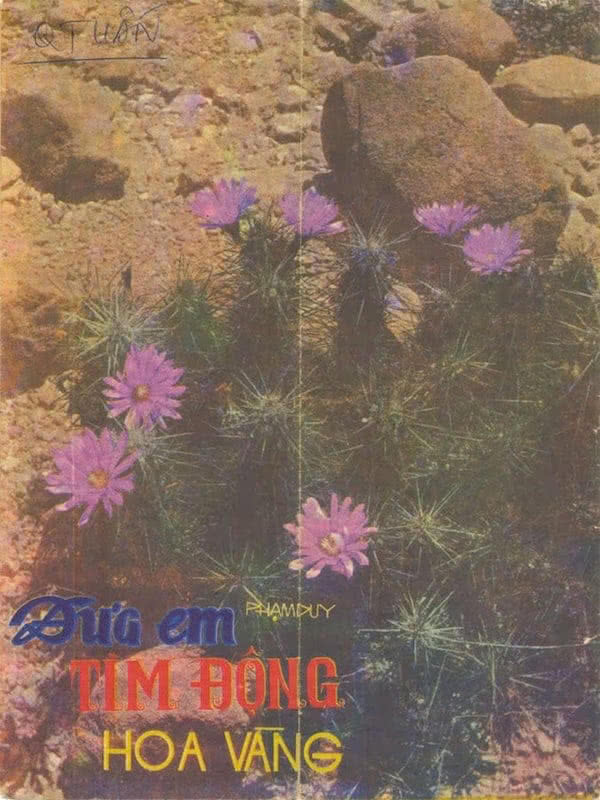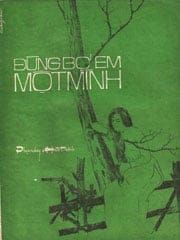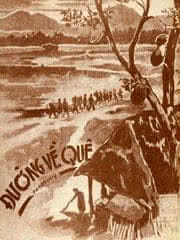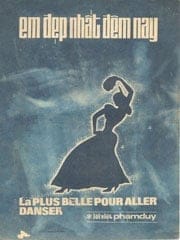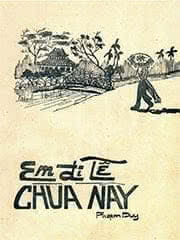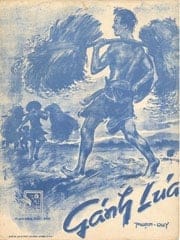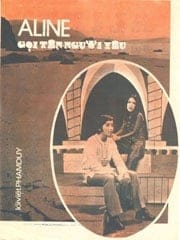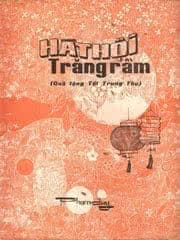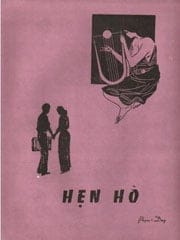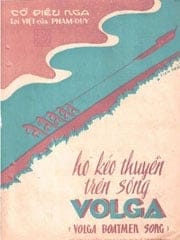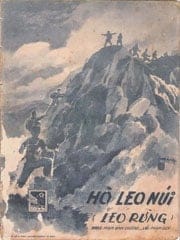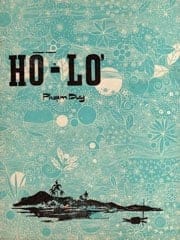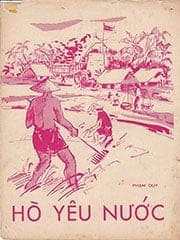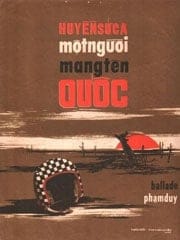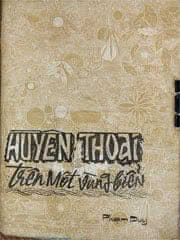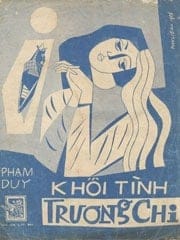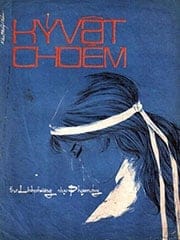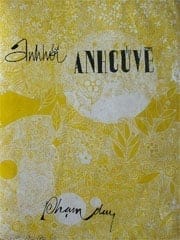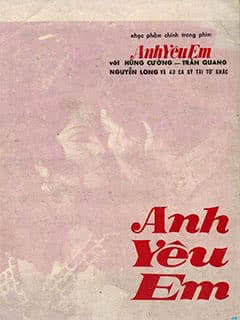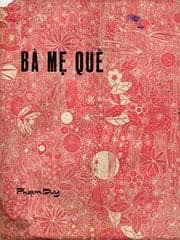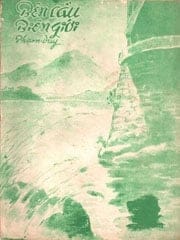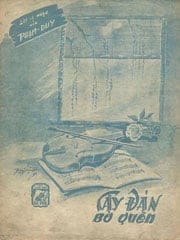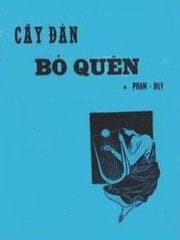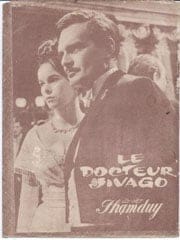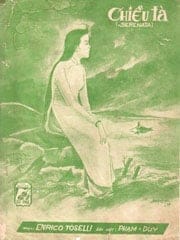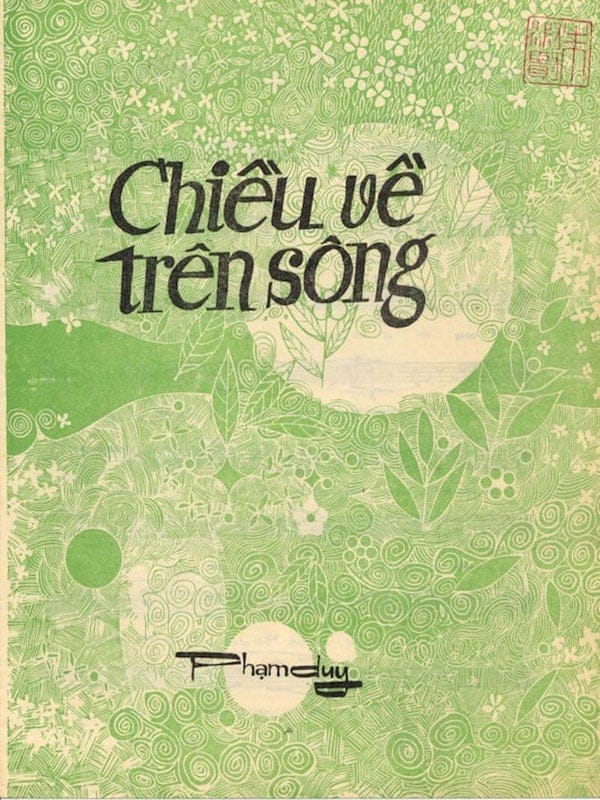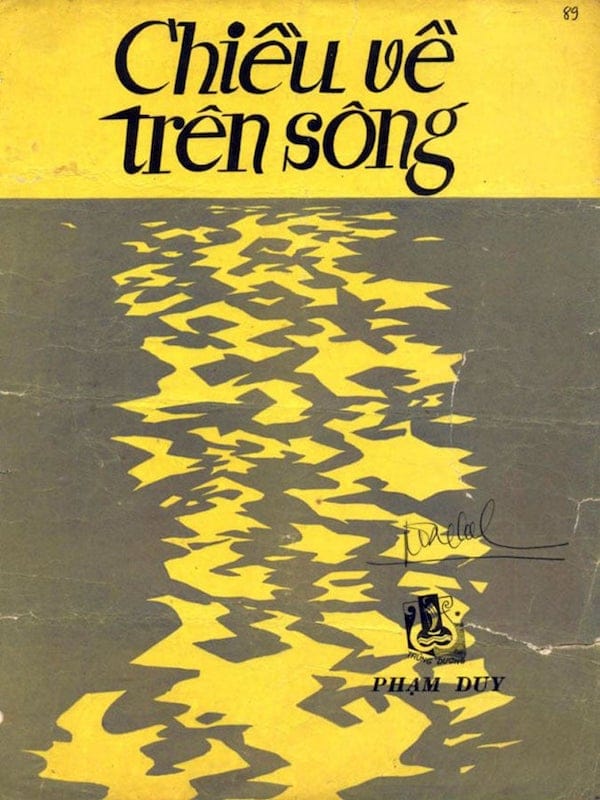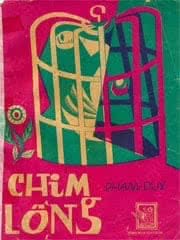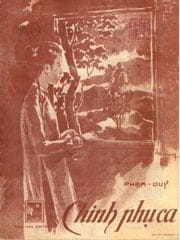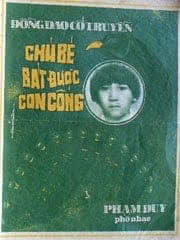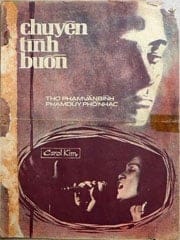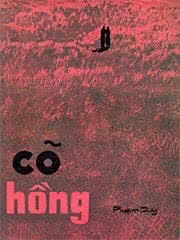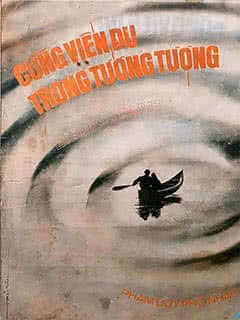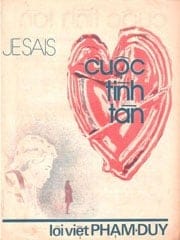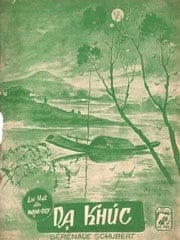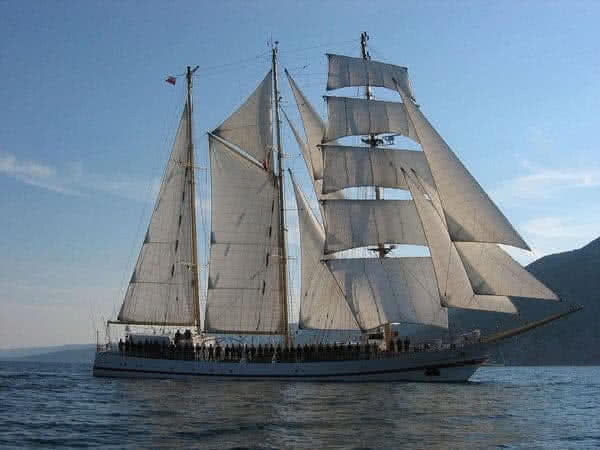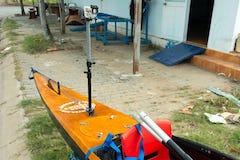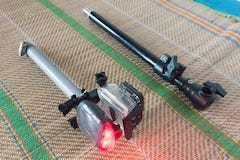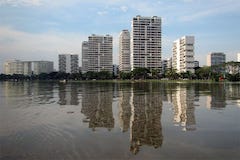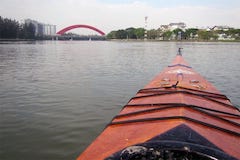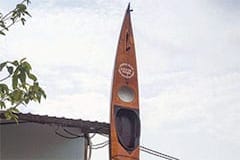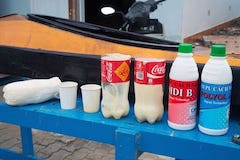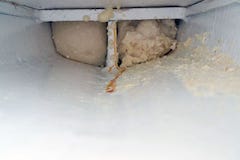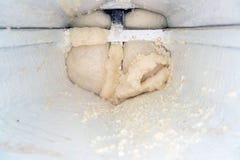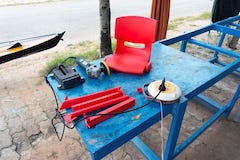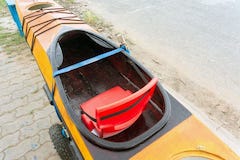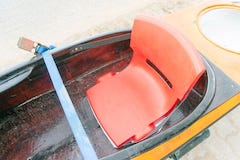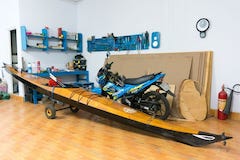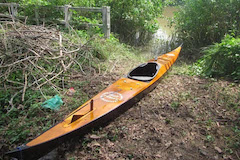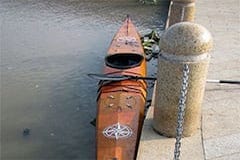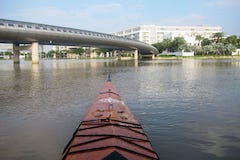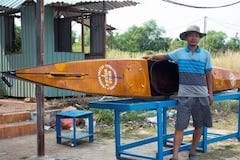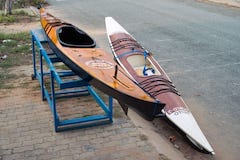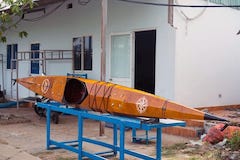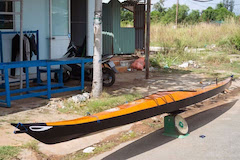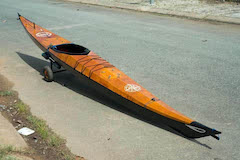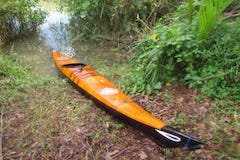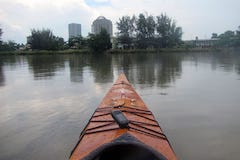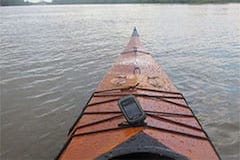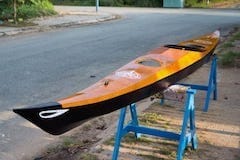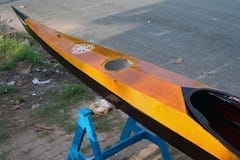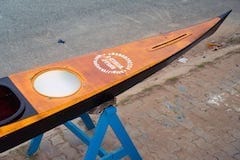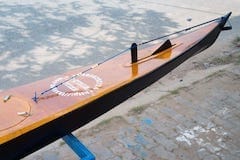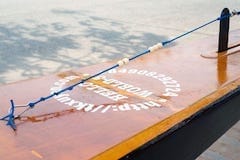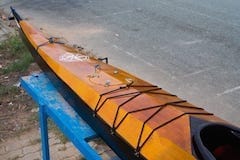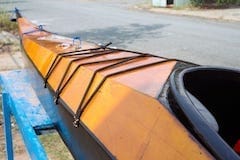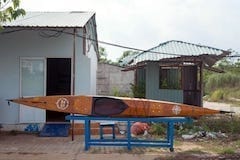 hiều người vẫn có “thói quen” dùng ngôn từ theo kiểu “chụp mũ” như thế, và không có đủ nhận thức rằng thật ra chúng khác nhau một trời một vực, và vô hình chung tự gài bẫy chính mình bằng những khái niệm không thể nhảm nhí hơn. Giống như người am hiểu thư pháp, chỉ cần cầm bút lên, chấm đúng một chấm thôi cũng đã đủ biết công phu đến đâu rồi, người hiểu biết không cần đến 3 giây để nghe ra sự khác biệt. Đã là thế kỷ thứ 21 mà nhìn chung dân trí và sự thẩm âm ở cái xứ này vẫn chưa qua được châu Âu thời kỳ Trung cổ!
hiều người vẫn có “thói quen” dùng ngôn từ theo kiểu “chụp mũ” như thế, và không có đủ nhận thức rằng thật ra chúng khác nhau một trời một vực, và vô hình chung tự gài bẫy chính mình bằng những khái niệm không thể nhảm nhí hơn. Giống như người am hiểu thư pháp, chỉ cần cầm bút lên, chấm đúng một chấm thôi cũng đã đủ biết công phu đến đâu rồi, người hiểu biết không cần đến 3 giây để nghe ra sự khác biệt. Đã là thế kỷ thứ 21 mà nhìn chung dân trí và sự thẩm âm ở cái xứ này vẫn chưa qua được châu Âu thời kỳ Trung cổ!
bìa nhạc phạm duy – 3
 ái sự gom nhóm theo kiểu cá mè một lứa đó là do những người không hiểu biết muốn đánh đồng tất cả những loại hay dở, hay ngu xuẩn hơn, là muốn thể hiện một quan điểm chính trị xã hội gì đó. Đó là một kiểu suy nghĩ nông dân ấu trĩ, người ta đã đi đến tận đâu đâu, mình còn ngồi đây, không có được một hiểu biết sơ đẳng thì sẽ luôn mắc phải những lỗi tư duy logic hình thức lớp 3 như thế như gà mắc tóc mãi. Không cớ gì là Bắc, Nam, Quốc, Cộng… tất cả đều có những người tốt xấu, những loại hay dở khác nhau, ở đâu và thời nào cũng vậy.
ái sự gom nhóm theo kiểu cá mè một lứa đó là do những người không hiểu biết muốn đánh đồng tất cả những loại hay dở, hay ngu xuẩn hơn, là muốn thể hiện một quan điểm chính trị xã hội gì đó. Đó là một kiểu suy nghĩ nông dân ấu trĩ, người ta đã đi đến tận đâu đâu, mình còn ngồi đây, không có được một hiểu biết sơ đẳng thì sẽ luôn mắc phải những lỗi tư duy logic hình thức lớp 3 như thế như gà mắc tóc mãi. Không cớ gì là Bắc, Nam, Quốc, Cộng… tất cả đều có những người tốt xấu, những loại hay dở khác nhau, ở đâu và thời nào cũng vậy.
bìa nhạc phạm duy – 2
 iện thể nói chuyện bên lề, xin nói rõ một vấn đề về cách gọi, những khái niệm như: nhạc vàng, nhạc tiền chiến, nhạc xưa, nhạc sến, nhạc miền nam, etc… chỉ là những umbrella term, những cách gom nhóm hết sức tuỳ tiện, thô thiển. Nếu ai đó tìm hiểu kỹ, sẽ thấy không phải bây giờ mà từ ngày xa xưa, văn hoá nghệ thuật Việt Nam cũng đã là một nồi lẩu thập cẩm đủ loại thượng vàng hạ cám, không thiếu một điều gì từ âm nhạc đích thực, loại làng nhàng, rồi loại ba xu rẻ tiền, cho đến loại lưu manh, đĩ điếm (kiểu như Em ơi chiều nay 100%).
iện thể nói chuyện bên lề, xin nói rõ một vấn đề về cách gọi, những khái niệm như: nhạc vàng, nhạc tiền chiến, nhạc xưa, nhạc sến, nhạc miền nam, etc… chỉ là những umbrella term, những cách gom nhóm hết sức tuỳ tiện, thô thiển. Nếu ai đó tìm hiểu kỹ, sẽ thấy không phải bây giờ mà từ ngày xa xưa, văn hoá nghệ thuật Việt Nam cũng đã là một nồi lẩu thập cẩm đủ loại thượng vàng hạ cám, không thiếu một điều gì từ âm nhạc đích thực, loại làng nhàng, rồi loại ba xu rẻ tiền, cho đến loại lưu manh, đĩ điếm (kiểu như Em ơi chiều nay 100%).
bìa nhạc phạm duy – 1
 ập hợp khoảng 150 bìa nhạc Phạm Duy… đây chỉ là một phần nhỏ trong số cả ngàn tác phẩm âm nhạc của ông, còn nhiều ca khúc khác không có bìa nhạc tương ứng, hoặc là thời gian đã quá xa xăm để có thể tìm lại được. Một số là những minh hoạ, giới thiệu đơn giản, một số có vẻ “ngây ngô” theo cái nhìn thời bây giờ, nhưng một số khác là những tiểu phẩm hội hoạ thực sự độc đáo do các hoạ sĩ tên tuổi thực hiện. Một thời, những tác phẩm âm nhạc được phổ biến theo cách như thế, những bản in lụa, in typo công phu, xinh xắn…
ập hợp khoảng 150 bìa nhạc Phạm Duy… đây chỉ là một phần nhỏ trong số cả ngàn tác phẩm âm nhạc của ông, còn nhiều ca khúc khác không có bìa nhạc tương ứng, hoặc là thời gian đã quá xa xăm để có thể tìm lại được. Một số là những minh hoạ, giới thiệu đơn giản, một số có vẻ “ngây ngô” theo cái nhìn thời bây giờ, nhưng một số khác là những tiểu phẩm hội hoạ thực sự độc đáo do các hoạ sĩ tên tuổi thực hiện. Một thời, những tác phẩm âm nhạc được phổ biến theo cách như thế, những bản in lụa, in typo công phu, xinh xắn…
vietnam naval training sailboat
 ccording to this very fascinating news: part 1, part 2 and part 3, Vietnam navy’s first (ever) training sailboat is being built at Conrad shipyard, Poland. Well, eventually, what I was thinking back many many years ago is being materialized, can’t imagine that this could be true! A navy longing to be strong should have its personnel trained, first and foremost, in this very harsh and rudimentary way as in the Age of Sail, just for the true spirits of seaman and seamanship.
ccording to this very fascinating news: part 1, part 2 and part 3, Vietnam navy’s first (ever) training sailboat is being built at Conrad shipyard, Poland. Well, eventually, what I was thinking back many many years ago is being materialized, can’t imagine that this could be true! A navy longing to be strong should have its personnel trained, first and foremost, in this very harsh and rudimentary way as in the Age of Sail, just for the true spirits of seaman and seamanship.
The boat is speculated to be similar, but larger than this Zygmunt Choreń designed, 380 metric ton, schooner barque rigged, ORP Iskra (Polish naval training vessel Iskra, showed in the image below). Some information on the boat under construction: LOA: 67m, LWL: 58.3m, beam: 10m, draft: 4m, 3 masts (about 40m in height each), 1400 m2 of sail area, with a crew of 30 plus 80 training cadets. The ship is planned to join Vietnam People’s Navy sometime in autumn this year.
 heo như nguồn tin rất hấp dẫn này: phần 1, phần 2 và phần 3, con tàu huấn luyện đầu tiên của Hải quân Việt Nam đang được đóng ở xưởng Conrad, Ba Lan. Cuối cùng thì điều tôi suy nghĩ rất nhiều năm về trước đang được thực hiện, thật khó tin điều này có thể trở thành hiện thực. Bất kỳ hải quân nước nào muốn mạnh, trước hết phải được đào tạo theo cách cực kỳ thô sơ và khắc nghiệt như thời của các tàu buồm, để học lấy cái tinh thần chân chính của người đi biển!
heo như nguồn tin rất hấp dẫn này: phần 1, phần 2 và phần 3, con tàu huấn luyện đầu tiên của Hải quân Việt Nam đang được đóng ở xưởng Conrad, Ba Lan. Cuối cùng thì điều tôi suy nghĩ rất nhiều năm về trước đang được thực hiện, thật khó tin điều này có thể trở thành hiện thực. Bất kỳ hải quân nước nào muốn mạnh, trước hết phải được đào tạo theo cách cực kỳ thô sơ và khắc nghiệt như thời của các tàu buồm, để học lấy cái tinh thần chân chính của người đi biển!
Con tàu được cho là tương tự (nhưng lớn hơn) so với chiếc ORP Iskra (tàu huấn luyện của Hải quân Ba Lan) tải trọng 380 tấn, thiết kể bởi Zygmunt Choreń trong bức hình dưới đây. Một số thông số kỹ thuật, dài: 67 m, chiều dài mớn nước: 58.3 m, rộng: 10 m, sâu mớn nước: 4 m, 3 cột buồm cao khoảng 40 m, tổng diện tích buồm: 1400 m2, thuỷ thủ đoàn 30 người cùng với 80 học viên. Dự kiến, con tàu sẽ gia nhập Hải quân Việt Nam vào khoảng mùa thu năm nay.
hello world – 3, part 24
 ast batch of updates for my kayak before Tết (Lunar new year), a detachable and retractable light (and camera) pole. At a bicycle accessories shop, I found a small signal light which uses solar cell (about 3 square inches in area). Testing the LED torch showed that after being fully charged, it could continuously blink for two nights, more than enough to be used for the boat. It has 4 blinking modes, which could be changed by a switch located behind.
ast batch of updates for my kayak before Tết (Lunar new year), a detachable and retractable light (and camera) pole. At a bicycle accessories shop, I found a small signal light which uses solar cell (about 3 square inches in area). Testing the LED torch showed that after being fully charged, it could continuously blink for two nights, more than enough to be used for the boat. It has 4 blinking modes, which could be changed by a switch located behind.
The light is small, lightweight and most importantly, doesn’t need a separated battery since it uses solar energy (that means: less thing to be cared for in a journey). The pole, in its retracted position, is high enough for the signal light to be visible from other vessels on water. When the GoPro is in used, the pole is extended about one foot higher so that the camera could get a better view ahead of the boat. And the whole thing could be used, as a… selfie stick when needed.
Screw off the pole from the connecting dock bolted down to the aft deck, attach my other Canon D30 camera to the end, then I have a selfie stick in hand. Well, I’ve been concentrating more on boats and paddling, not the photography things, but it’s better being able to capture the beautiful scenes along the paddling way anyhow. There’re still many things to be done for the kayak, but that would be until the next year. For now, just more and more paddling, 25 km every 2, 3 days or so.
May the new year comes for me with more will and determination to reach my dream target. The more I understand about the task, the more challenging I’ve realized how it would be, for now, I’m not sure still if I could make it: lots of practicing and preparing, a huge deed of efforts and endurance required to make that 300 km (6 ~ 7 days or more) journey. May the new year comes with more internal calm and balance, for me to live wholly in this simplicity and purposefulness.
hello world – 3, part 23
 ade some more miscellaneous improves to my HW – 3 kayak… First is filling the two boat’s ends with Polyurethane foam. For an example of how PU foam works, see a demo video here. It takes just a few minutes for the mixed – two components to expand into a closed – cell (water proof), somewhat rigid structure. The foam I bought is exactly the one used for refrigerators’ insulation (see the 2nd image below, two bottles containing two components called: Polyol and MDI).
ade some more miscellaneous improves to my HW – 3 kayak… First is filling the two boat’s ends with Polyurethane foam. For an example of how PU foam works, see a demo video here. It takes just a few minutes for the mixed – two components to expand into a closed – cell (water proof), somewhat rigid structure. The foam I bought is exactly the one used for refrigerators’ insulation (see the 2nd image below, two bottles containing two components called: Polyol and MDI).
The foam adds about 600 ~ 700 grams to the boat’s weight, it fills about 1 meter of boat length at both two ends, occupying a total volume of about 60 liters (estimated). This is just an act of precaution, as in the worse case should the boat cracks, or if there’re holes punched into the hull, the whole boat could be flooded, but it will still stay afloat. I erect the kayak upright, pouring the mixed PU foam through the hatch, wait for 15 minutes, then repeat the same thing for the other end.
Instead of making a complex foam seat as I originally planned (which could be very time consuming cause it requires creating a mould), I chose to install instead the simplest thing that works. Bought a small plastic kid seat, cut the four legs away. A strap line helps holding the seat in place (bolted to the cockpit coaming) and supports its back. The size of the kid seat is about right, not too small for a comfortable ride, and not too big so that a spray skirt could be deployed later.
This season, Christmas, Gregorian New Year until Lunar New Year (about 1.5 month from now) the city is decorated with all kinds of lighting, creating splendid sceneries. I’ll try to have some night paddling to capture those colorful moments. With the overpopulation situation in Sài gòn becoming worse and worse day after day, I dare not step into the urban districts these days anymore, viewing the city from above the water seems to be a very nice alternative option to me! 😀
hello world – 3, part 22
 aving made some more thorough testing, I’m now feeling very pleased with the new boat and its build quality. After several 20 ~ 25 km paddling trips, I think I can average out at 7 kmph for extended time (5, 6 hours) and probably longer with more endurance exercising. That’s still not up to my expectation yet, but about speed, on the internet, you can hardly find trustable reporting on kayak and its paddler’s abilities, some boating information is purely… bloating!
aving made some more thorough testing, I’m now feeling very pleased with the new boat and its build quality. After several 20 ~ 25 km paddling trips, I think I can average out at 7 kmph for extended time (5, 6 hours) and probably longer with more endurance exercising. That’s still not up to my expectation yet, but about speed, on the internet, you can hardly find trustable reporting on kayak and its paddler’s abilities, some boating information is purely… bloating!
At some points, due to the lack of correct information, I did have some illusions on paddling speed. But now I definitely know that a typical good sea kayak has the average, sustainable speed in the 7 ~ 7.5 kmph range. Beyond that would be the domain of racing kayak or surfski, which could step into the 8 ~ 9 kmph range, the best of which could not reach too far beyond 9 kmph. And that probably would be the target of my next build, though currently I have no plan for it yet.
Unlike HW – 2, I feel very comfortable to paddle HW – 3 into the wind. The hull pierces waves nicely, and I think the boat would surf well also. Haven’t had the chance to trial the kayak in big standing waves, but in some lesser situations, I’d noticed that the boat rides waves in style, with very little drifting, shaking. That’s a characteristic very much needed when I would leave the relatively – calm rivers to go into the much more choppy areas of coastal sea and large estuaries.
It’s approaching year end and I’ve got lots of other stuffs to do, so there won’t be any big updates to the kayak until next year. It’s a real pleasure when on rivers, people was asking where I bought the boat from, and when I told them that I built it myself, none believes it 😀! This season, day temperature is dropping below 25°C (that’s already called “cool” for a tropical Saigon), good for going paddling indeed. Some video shots to show the boat, captured with my GoPro mounted at bow.
hello world – 3, part 21, mise à l’eau
 roudly present the new – kid – on – the – block, the flagship to join my armada 😬! The first image below: the boat and her quite – satisfied builder / owner! 😀 Today is launch day (the French phase
roudly present the new – kid – on – the – block, the flagship to join my armada 😬! The first image below: the boat and her quite – satisfied builder / owner! 😀 Today is launch day (the French phase mise à l’eau
simply means: put to water), I tested the kayak for a short trip of about 15 km. The first thing to notice when sit in and start some paddling strokes is that the boat has extremely good primary and secondary stabilities, unlike my previous HW – 2.
All boating measures is relative, and you trial to find out what works for you. HW – 3 has very good stabilities, or at least I’ve get used to those not – as – good of HW – 2. The boat tracks very well, I could have the skeg completed retracted on somewhat calm water. The turning radius is still large, not something abnormal for kayak of this length, the boat behaves nicely and responses well to my edged turning actions. I have nothing to complain about its tracking and turning capabilities.
Speed sees a good improve, I can easily average out at 7.5 kmph (flat water, measured in 2 hours), about 1/4 better compared to that of HW – 2, well for sure HW – 2 is only a 14 footer. Actually, I was expecting a greater improve in speed (about 1/3, not 1/4). Anyhow, I need to get familiarized with the new boat, and to figure out the exact measuring numbers. Also I noticed that the boat is a bit heavier at stern, the lowest point of the bow sometimes pops out above the waterline.
That suggests me to shift the weight balance toward the bow a bit (e.g: arranging the carrying load), to gain the waterline length a little longer, to improve speed further. Well, the next couples of weeks is just paddling and paddling, to improve my endurance (I’ve been having little practices for the last two months). I would need to make some longer trips (about 20 ~ 25 km each) to get known to her, the new boat, and to see how she would behave in rougher water and weather conditions.
hello world – 3, part 20
 hen all the vinyl decals are in place, I started varnishing the deck. A note about vinyl stickers, which I can have them cut at a local shop for a cheap price. The last time, I designed all with Photoshop, then export to EPS format. Unfortunately, Corel Draw does not understand that EPS very well. Corel is usually the software used to operate the vinyl cutter machine: the vector editing program just “print” the designs to the vinyl cutter, which handles all “drawing” (cutting).
hen all the vinyl decals are in place, I started varnishing the deck. A note about vinyl stickers, which I can have them cut at a local shop for a cheap price. The last time, I designed all with Photoshop, then export to EPS format. Unfortunately, Corel Draw does not understand that EPS very well. Corel is usually the software used to operate the vinyl cutter machine: the vector editing program just “print” the designs to the vinyl cutter, which handles all “drawing” (cutting).
This time, I thought of a new way, I used Photoshop to design all the graphics, and export them to large black & white images (PNG). Then in Corel, I used the “Trace Bitmap” feature to try converting those bitmap data into vectors, which usually works very well for B & W (2 colors) images, then have them cut by the vinyl cutter. At least for some simple graphics such as logos, short texts… this way works well enough, and I don’t have to spend time learning more about using Corel Draw.
The deck varnishing went on smoothly, with the lessons learnt from varnishing the hull. The 4th, 5th images below: installing the skeg, the bungee cord pulling the skeg toward the stern, and the paracord holding the skeg in place toward the cockpit. Note that I attached the bungee and the paracord directly to each other, so that the thin skeg blade won’t withstand the tension of those pulling lines, it just follows the control. Note also the 5 knots used as 5 levels of skeg lowering & raising.
Install the fore deck lashing bungee lines, attach the two grab handles and it’s done! Some may have noticed that the cockpit doesn’t have the cheek plates and the seat, but I’ll keep it simple for now. I’m used to sitting just on bare wood, with no back rest, even on prolonged trip, that’s fine for me. Well, the boat is now ready for some “technical trials” 😀, to see how it behaves on water. There’s still a long way equipping it for real voyages, but that would be later. Now, to the water! 😀





